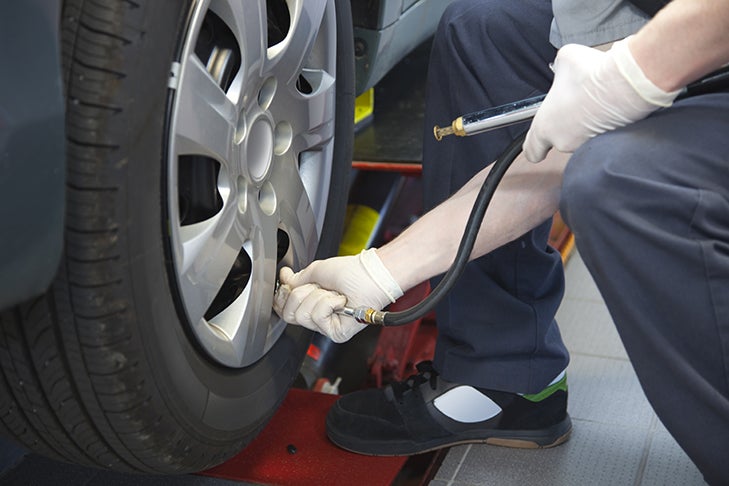
Mazda wants to contribute to a safe and accident-free society, so they concentrate upon four things when they build a car; infrastructure, vehicles, roads and the people who drive them. Since people are the most important part of that equation, Mazda’s safety philosophy is based on respecting, understanding and trusting the driver of a Mazda vehicle. Read on to learn more about the ways Mazda helps drivers to be as safe as possible on our roadways.
SAFETY AND COMFORT
Hill Launch Assist
Hill Launch Assist (HLA) automatically keeps the car from rolling backwards when the driver moves his foot from the brake to the gas pedal when taking off on a slope. On a more steep slope, the brake is released after enough torque is generated; and on a gentle slope, the automatic brake is released immediately when the driver hits the gas for a smooth take-off.
High Beam Control/Adaptive Front-lighting System
High Beam Control (HBC) gives the driver peace of mind at night by detecting oncoming and preceding vehicles by automatically switching between low and high beams, which makes it easier for a driver to see hazards. Along with the Adaptive Front-lighting System (AFS), which points the headlights in the direction of travel, HBC offers a wider field of vision, so the driver can see hazards from further off into the distance.
Mazda Radar Cruise Control
Working within a set speed range, Mazda Radar Cruise Control (MRCC) uses radar to measure the comparative speed and spacing to the car in front of you and automatically adjusts your speed to help you follow at a safe distance from the car in front. This system helps to relieve some of the strain on a driver on highways and long road trips.
HAZARD PERCEPTION
Rear Vehicle Monitoring System
The Rear Vehicle Monitoring System (RVM) uses a radar mounted in the rear bumper to measure the distance to cars in neighboring lanes or approaching from behind and it warns the driver by activating both a warning lamp and an audible alarm if there is a possibility of collision when changing from one lane to another.
Lane Departure Warning System
The Lane Departure Warning System (LDWS) looks for the lines marking a road and alerts the driver if they cross those lines without activating a turn signal or accelerating. This helps a driver keep to their chosen lanes for the safety of everyone – and it can be especially helpful on long trips when drivers are more likely to experience inattention and possibly drift from their lane.
Emergency Signal System
The Emergency Signal System (ESS) makes your hazards flash rapidly if there is a sudden braking situation at higher speeds to let following vehicles know what is happening. If the vehicle stops completely, the lights switch to normal flash to light the scene and prevent any rear-end accidents.
Forward Obstruction Warning
Forward Obstruction Warning (FOW) objects or vehicle in front of your car with radar. If something is detected, you are prompted with both an audible alarm and a visual alert to apply your brakes and prevent an accident.
HAZARD AVOIDANCE
Brake Assist and Electronic Brakeforce Distribution
Brake Assist measures the velocity at which you press the brake pedal and the braking pressure. When those forces are judged to be inadequate, the system will compensate by applying extra braking pressure. The addition of Electronic Brake Force Distribution (EBD) makes it easier to keep control and shorten stopping distance.
Antilock Braking System
The 4-wheel Anti-lock Braking System (4W-ABS) employs the perfect amount of brake force to the wheels of your car to avoid slips in hard-braking circumstances. Slips are avoided by the driver keeping constant brake pressure even as the ABS automatically pumps the brakes to keep things stable and avoid tire lock-up.
Dynamic Stability Control/Traction Control System
The Dynamic Stability Control system (DSC) takes control of the vehicle if a skid is detected and guards against loss of control by controlling engine power production and brakeforce applied to each wheel and by using the Traction Control System (TCS) which keeps tires from spinning unnecessarily.
SUMMARY OF SAFETY
Safety systems are made to reduce risk of accidents by assisting the driver in maintaining optimum control in every driving condition. It is, however, important to realize that every system has its limitations and that these systems are not meant to replace attentive and safe driving practices! Come see us at Mazda of South Charlotte, located at 6501 South Blvd Charlotte, NC to learn more about Mazda’s commitment to your safety. Keep an eye on our site for great financing specials, super car prices and fantastic service and repair deals in the area. We make it worth the drive from cities like Fort Mill and Rock Hill SC and Matthews and Concord NC and all over the region, so come in soon, or give us a call at 888-904-8191 today!
Written By: Robert Cole


![[Facebook]](https://www.mazdaofsouthcharlotte.com/blogs/839/wp-content/plugins/bookmarkify/facebook.png)
![[LinkedIn]](https://www.mazdaofsouthcharlotte.com/blogs/839/wp-content/plugins/bookmarkify/linkedin.png)
![[Twitter]](https://www.mazdaofsouthcharlotte.com/blogs/839/wp-content/plugins/bookmarkify/twitter.png)
![[Yahoo!]](https://www.mazdaofsouthcharlotte.com/blogs/839/wp-content/plugins/bookmarkify/yahoo.png)
![[Email]](https://www.mazdaofsouthcharlotte.com/blogs/839/wp-content/plugins/bookmarkify/email.png)
